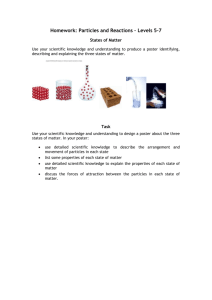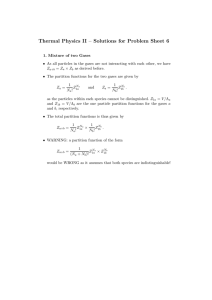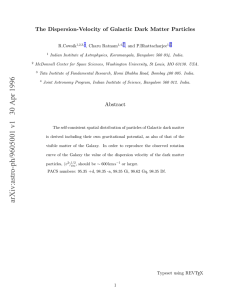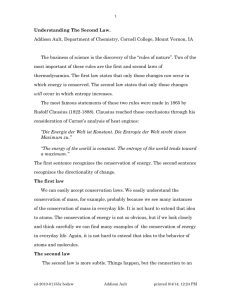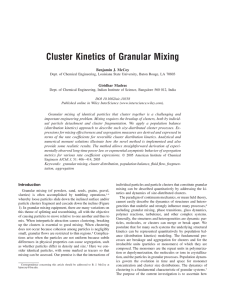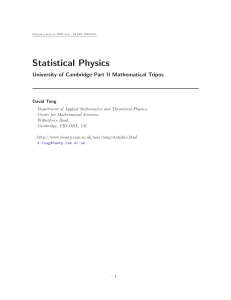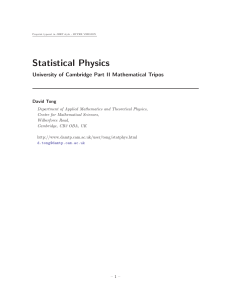Thermal Physics II – Problem Sheet 6 Part I: Questions
advertisement
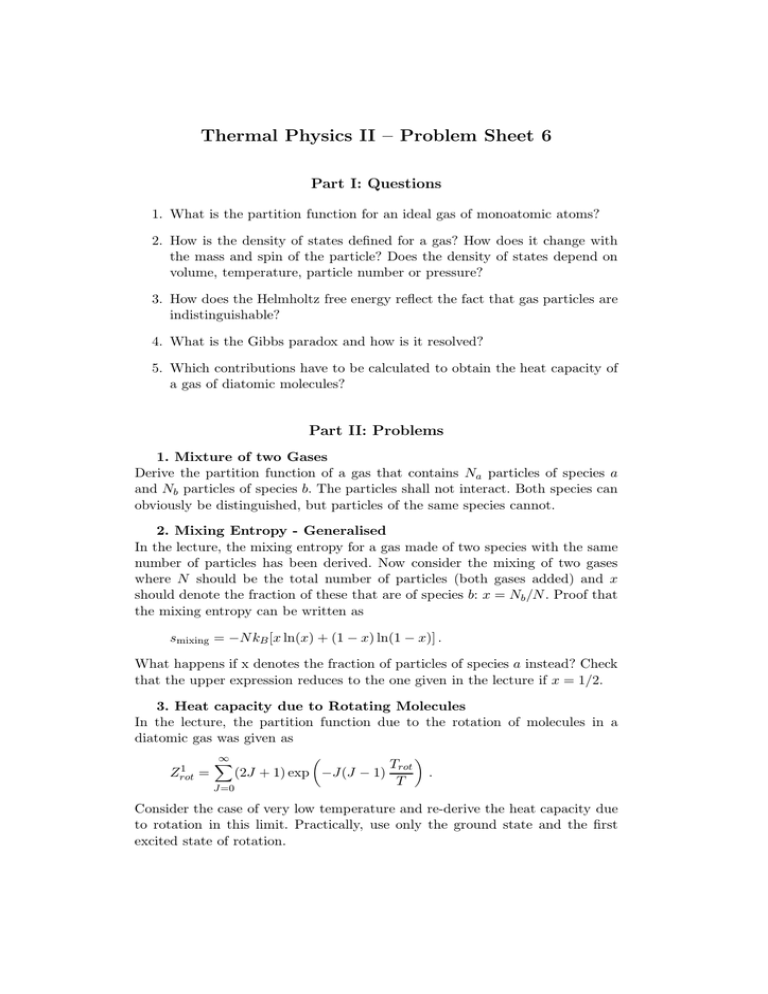
Thermal Physics II – Problem Sheet 6 Part I: Questions 1. What is the partition function for an ideal gas of monoatomic atoms? 2. How is the density of states defined for a gas? How does it change with the mass and spin of the particle? Does the density of states depend on volume, temperature, particle number or pressure? 3. How does the Helmholtz free energy reflect the fact that gas particles are indistinguishable? 4. What is the Gibbs paradox and how is it resolved? 5. Which contributions have to be calculated to obtain the heat capacity of a gas of diatomic molecules? Part II: Problems 1. Mixture of two Gases Derive the partition function of a gas that contains Na particles of species a and Nb particles of species b. The particles shall not interact. Both species can obviously be distinguished, but particles of the same species cannot. 2. Mixing Entropy - Generalised In the lecture, the mixing entropy for a gas made of two species with the same number of particles has been derived. Now consider the mixing of two gases where N should be the total number of particles (both gases added) and x should denote the fraction of these that are of species b: x = Nb /N . Proof that the mixing entropy can be written as smixing = −N kB [x ln(x) + (1 − x) ln(1 − x)] . What happens if x denotes the fraction of particles of species a instead? Check that the upper expression reduces to the one given in the lecture if x = 1/2. 3. Heat capacity due to Rotating Molecules In the lecture, the partition function due to the rotation of molecules in a diatomic gas was given as 1 Zrot = ∞ X (2J + 1) exp −J(J − 1) J=0 Trot T . Consider the case of very low temperature and re-derive the heat capacity due to rotation in this limit. Practically, use only the ground state and the first excited state of rotation.



